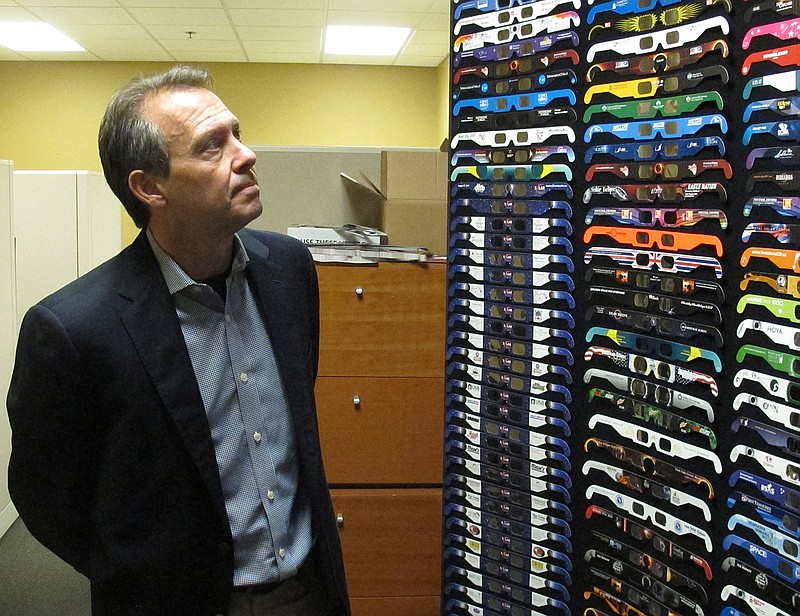The most important thing residents need to know about The Great American Eclipse Aug. 21 is to wear approved protective lenses.
This is the first total solar eclipse to be visible from on the U.S. since before 1776 and for Missouri since 1869.
According to NASA, during a total eclipse, the moon passes between the sun and the earth, blocking its light and allowing viewers to see the sun's outer atmosphere, the corona. The moon casts a shadow, called an umbra, onto the earth.
Communities in the path of totality will experience a few minutes of temperature drop and dimmed sunlight similar to twilight as the umbra passes over them.
But the danger to one's eyes is just as severe whether looking at the bright sun on a given day or the hidden one during this eclipse.
California, Mo., native Jacqueline Byrd, now an optometrist with Donald Vanderfeltz, noted animals, including humans, have the instinct to blink, look away or pupils constrict.
During this less than three minute event, those natural inclinations may not kick in. That's why protective lenses are imperative.
"It's okay to view through special filters," Byrd said. The protection is equal to that worn by welders, she said.
The Vanderfelz office has provided protective lenses to schools and the local chamber for group events. And individuals may stop by for a free pair.
Originally, the local optometrist ordered a sizeable quantity from the Missouri Optometric Association.
Before viewing the eclipse, individuals should confirm their protective lenses say "ISO," to guarantee they are approved to provide the adequate protection, Byrd said.
More than a week before the eclipse day, the local office has distributed more than 1,500 lenses.
"We were scrambling to keep up with demand," Byrd said. "We realized people were really excited about this.
"We want to promote eye safety, because the damage is permanent."
Viewing the sun unprotected will damage the central vision, the macula at the back of the eye.
"It can burn a hole in it causing distortion or complete loss," Byrd said. "It's a similar visual effect to macular degeneration."
Byrd will speak to students at the Bunceton School the morning of Aug. 21 to educate on eye protection.
Starting her practice about one month ago in her hometown, Byrd said the eclipse was good timing for her to interact with the community.
A graduate of California High School and the Universty of Missouri-Columbia, Byrd worked at Vanderfeltz' office growing up with the goal to return as an optometrist. She recently graduated from the Southern California College of Optometry at Marshall B. Ketchum University, Fullerton, California.
Vanderfeltz also will talk about safe viewing at the local chamber's event 11 a.m.-1:30 p.m. at the Moniteau County Fairgrounds.
Glasses are available at the Vanderfeltz office or at the California Nutrition Center for a donation.
"This is a once-in-a-lifetime experience," Byrd said. "We're lucky we can view it safely through these filters."

